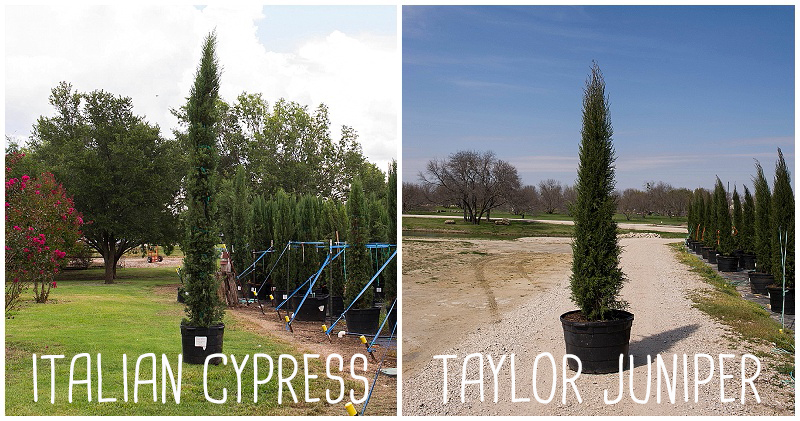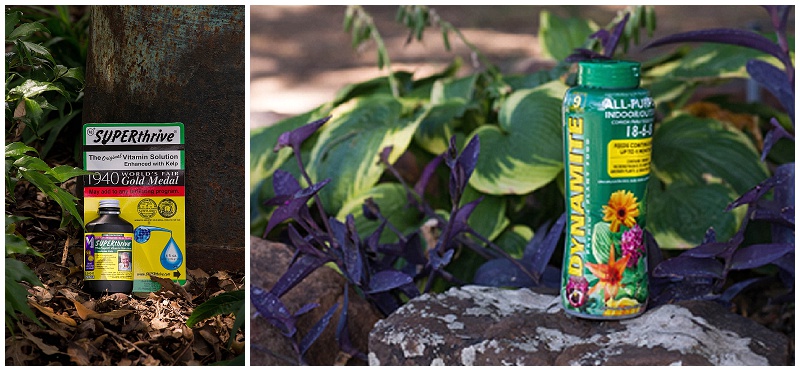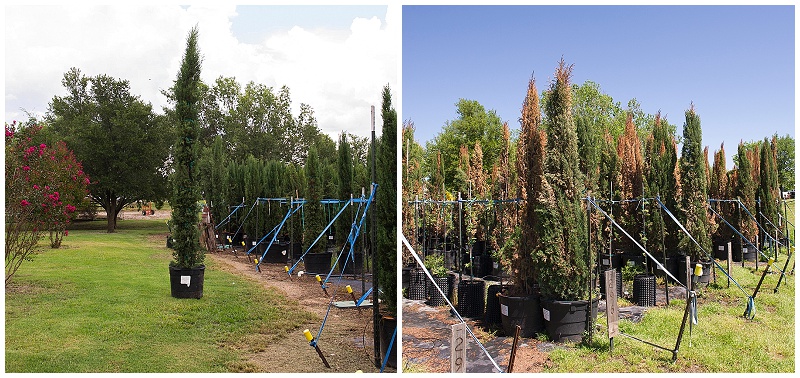12-5-19 I just noticed that somehow this blog was put into drafts after being posted. I want to make sure that this information is still available to our readers as many people are still seeing the effects from this wave of damage to the Italian Cypress trees across DFW.
*Update 6/25/17 – Wow so many comments submitted over this post that we do not even have time to reply to them all unfortunately. However, the good news is that most are easily answered by reading the post all the way through. One major question from our readers is if the tree is going to survive. Sorry but nobody can promise you that, but I wish we could. Another top question from readers who are seeing browning that didn’t show up until this Spring and Summer is how to treat for spider mites. If you have Spider Mites (see our recommended paper test instructions below) then you will need to use a product that has a miticide in it. We recommend Bayer 3-in-1. The the other main comments are from those who do not believe that freeze damage was the cause and they are determined that it was just the Canker due to other writings from local aborosits. Yes we are arborists as well and are well aware of the disease Seiridium Canker. Do we believe that it was the main cause of the damage occurred to the trees in December, no. Are we are aware that other arborists have opposing opinions, yes. Now if your tree started to brown way past Dec- Feb. then you could be looking at Seridium Canker as it really targets trees that are under stress and especially during the warmer months. Please understand that this blog was just to address the damage caused in December, not all issues for Italian Cypress trees that occur at different times of the year. That is a totally different basket of worms. I also changed the blog title to better reflect the time sensitive material of this blog. *End of Update
We have been getting tons of calls the past couple weeks with people from the Dallas-Fort Worth area asking “What is wrong with my Italian Cypress Trees?”. I even just got another call while trying to write this blog of a customer who’s Italians were turning brown and had a arborist come out before calling us. They told them the tree was under watered and to water more and fertilize. They looked beautiful a few months ago and just recently started showing lots of browning on random branches. We keep hearing this same story from everyone in North Texas. We too experienced this at our farm in Gunter, TX between the end of February – March of 2017 as our Italians went from a beautiful lush green to covered with sporadic brown branches in just a few weeks. Most of the time when our customers see stress on their Italian Cypress Trees it’s a simple answer of either underwatering or spider mites as Italian Cypress trees have relatively few disease issues, but not this Winter.
So what is up with my Italian Cypress Trees?
If you trees went from beautiful to browning drastically quick between the end of Feb-March we are calling- FREEZE DAMAGE. This year was particularly unusual as we had freezing temperatures several days in a row; something I have never seen here in the Dallas-Fort Worth area in my lifetime. On February 17th, 2017 the weather was a beautiful 70 degrees and then that dropped to 15 degrees that next morning and remained freezing for several days. Those freezing temperatures and the temperature fluctuations were just too much for many of our plants across DFW. You make have also noticed freeze damage and shock on your rosemary, pittosporum, boxwoods, jasmine, and Hawthornes to name a few. The main sign is lots of browning and possibly dieback of leaves and branches. Some plants had light damage while others were wiped out.

All of our Italian Cypress trees were so perfect and full before the freezes. Bob is still upset since we lost a lot of money in our own crops on the farm. Many of our customers have jumped to conclusions such as the tree has a disease or maybe it was planted wrong, but we understand that people are desperately trying to figure out what happened and it’s human nature to jump to such drastic conclusions. I know I can get carried away on WebMD myself when I have something wrong, and I can diagnose myself with all kinds of things with just a headache. Many call upon Arborists who also give their best guess for a fee. We want our customers we be successful, and I can assure you that we hate replacing trees as much as they do. For our customers we offer an omission free 18 month warranty – the longest in the industry. You get a 2/3 allowance from the original purchase cost of the tree (after discounts), and that can be applied to any tree of equal or greater value. We don’t argue about why the tree died, we honestly just want to help our customers as best we can. Sometimes Mother Nature has her own plan, but we encourage our customers to call us with any concerns to see if we can help save their tree.
The bad news is that there is no way of know if this will happen again. We made the very difficult decision this year to stop selling the Italians for now and may never carry them again. We have replaced them with Taylor Junipers which are a variety of Eastern Red Cedar. The Taylor Junipers are very drought tolerant and cold hardy. A farmer discovered the tree in Taylor, Nebraska and started cultivating them. Now they are so popular up North that they can hardly keep them stocked. We are very excited to introduce this new tree to North Texas since they are so hardy, and the survivability of the Italians in unknown at this time. We also think the Taylor Junipers are even fuller and prettier than the Italian Cypress.

What can you do to help your existing Italian Cypress Trees that received freeze damage?
While there is no 100% guarantee that they will survive (sorry nobody can promise that), we are recommending that our customers apply Dynamite Fertilizer and Superthrive to help give them a boost. They will need time to recover, but with both the Dynamite and Superthrive that will jumpstart that process. Just follow the instructions on the back of the bottle. Dynamite Fertilizer is sold at various Home Depot stores, and I would call them before going as they are not always in stock. Superthrive seems a little more readily available, and can even be purchased at Walmart; but be prepared that it is a little pricey.
Still having issues long past the winter freezes?
If you are reading this blog far after the freeze then you might be looking at watering issues or spider mites. To check for spider mites just take a piece of white paper and shake a branch over it. You should see tiny red bugs crawling around on the paper. Spider Mite damage also looks different as it starts from the inside branches and works its way out. If it’s neither spider mites or freeze damage, then you are most likely looking at watering issues, most commonly under watering. You can purchase a soil moisture probe to check your soil by the root ball of the tree. You are looking for a play dough like texture that’s not too moist or too dry. Do not run the test right after you have watered the tree because the results will obviously be skewed.
I hate to be the bearer of bad news, but I had to share our two cents. We have been in business since 1984 and we know our trees. We realize that their are a few local arborists who have a different opinion than ours. Please understand that those that are blaming canker are basing their claim after testing only one tree. Thousands were damaged in North Texas. You have to test a tree to determine if it has canker, and that is the only way to know for sure. Also, ask yourself why were all of the other varieties of trees that get Canker not affected by the freeze if canker was the main cause? As usual farmers have differing opinions with arborists from time to time, it’s no big deal, and we didn’t write this blog to offend anyone who has hired an arborists. We just want to get to the bottom of it like everyone else. We always invite our customers to call us during our business hours for guidance as we want everyone to have success with their plants.
-Denise















Why dont you think it is a fungus?
Fungus doesn’t attack all of the trees across North Texas at once; especially in late Feb. and March. We lost a whole field at once after the freeze, and we have had hundreds of calls from people all over North Texas with the same issue. Curious what has led you to question if it is a fungus?
Should we trim the freeze damaged branches? Will new growth occur?
Have you seen oozing sap from damaged Italian cypresses?
I have 3 of 5 cypesses which have sap oozing from the main stem. The ones with sap oozing have one dying branch and some browning.
Note: The browning just started in the last 2 weeks. The trees have already been treated for spider mites.
Yes that sounds like Canker for sure. Your best bet is to cut the damaged Cypress branches down 6″ below the wounds. Since you mentioned that your sap is coming out of the main branch that is even more concerning. I am not sure if your trees would survive that much cutting on the main trunk. It’s your best shot at saving it in our opinion. Dr Ong from Texas A&M University also recommends a broad spectrum fungicide to protect the tree. Also make sure to clean your pruning tools with alcohol after cutting on the infected trees. Good Luck Pam!